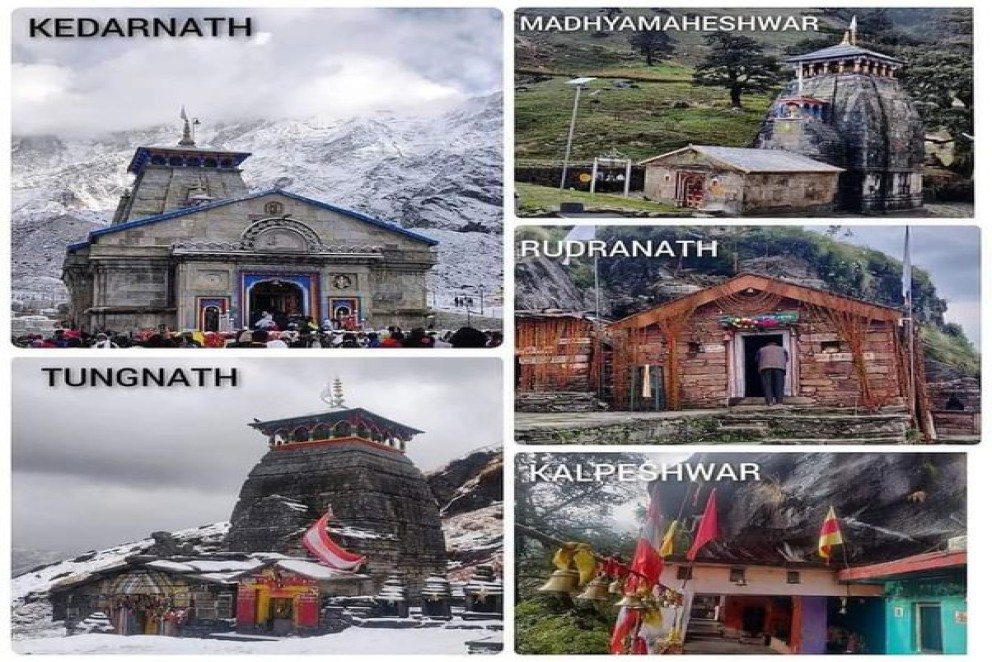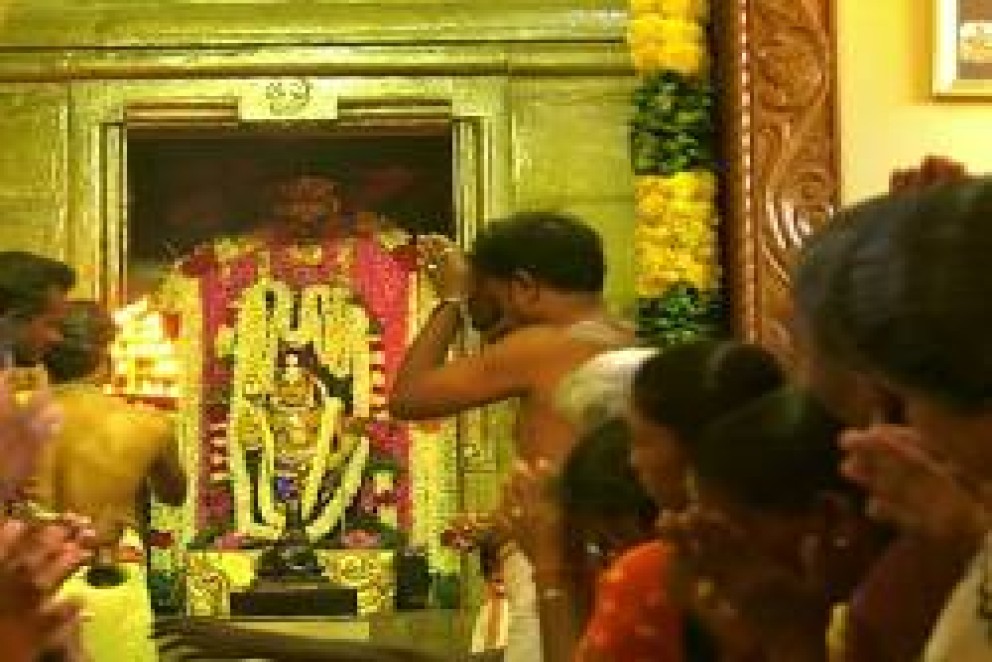Blog Details

A Complete Guide to Uttarakhand's Char Dham Yatra and the Shrines in 2024
Nestled amidst the mighty Himalayas, the Char Dham shrines in Uttarakhand stand as sacred abodes that beckon pilgrims from all corners of the globe. These four revered sites—Yamunotri, Gangotri, Kedarnath, and Badrinath—hold profound significance in Hindu mythology and spirituality. Each shrine boasts its unique history, architectural grandeur, and natural splendor, making the journey to these holy sites not only a pilgrimage of faith but also an odyssey of discovery. Let's embark on a spiritual sojourn as we explore the essence of each Char Dham shrine.
Yamunotri

History: The revered Yamunotri shrine, situated at an altitude of 3,293 meters in the Garhwal Himalayas, is dedicated to Goddess Yamuna, the divine consort of Lord Krishna. Legend has it that Yamunotri is the birthplace of the sacred river Yamuna, making it an essential pilgrimage destination for devotees seeking purity and salvation.
Temple Information: The Yamunotri temple, constructed by Maharani Guleria of Jaipur in the 19th century, stands as a testament to ancient architectural brilliance. Adorned with intricate carvings and adorned with a silver umbrellalike structure, the temple exudes an aura of serenity and devotion.
Geography: Surrounded by lofty peaks and lush greenery, Yamunotri offers a breathtaking panorama of nature's splendor. The temple sits adjacent to the Yamunotri Glacier, and the pristine Yamuna River flows gracefully nearby, adding to the sanctity of the surroundings.
Flora and Fauna: The region around Yamunotri is blessed with diverse flora and fauna, including coniferous forests, alpine meadows, and rare Himalayan herbs. Visitors may catch glimpses of Himalayan black bears, musk deer, and a variety of avian species amidst the verdant landscapes.
Weather: Yamunotri experiences cold weather throughout the year, with temperatures dropping significantly during winters. Summers offer a pleasant climate, ideal for pilgrimage and sightseeing.
How to Reach: The journey to Yamunotri commences from the town of Hanuman Chatti, accessible by road from major cities like Dehradun and Rishikesh. From Hanuman Chatti, pilgrims undertake a trek of approximately 6 kilometers to reach the temple.
Best Time to Visit: The best time to visit Yamunotri is during the summer months of May to June and September to November when the weather is conducive for travel and pilgrimage.
Gangotri:

History: Perched at an altitude of 3,100 meters in the Uttarkashi district, Gangotri is revered as the origin of the sacred river Ganga. According to Hindu mythology, Goddess Ganga descended to Earth to cleanse the sins of mankind at this holy site.
Temple Information: The Gangotri temple, built by Amar Singh Thapa in the 18th century, is an architectural marvel adorned with white granite walls and a towering shikhara. The sanctum sanctorum houses a silver idol of Goddess Ganga, attracting devotees in large numbers.
Geography: Surrounded by snow-capped peaks and dense forests, Gangotri mesmerizes visitors with its serene ambiance and natural beauty. The temple overlooks the gushing Bhagirathi River, which originates from the Gangotri Glacier, adding to the spiritual aura of the place.
Flora and Fauna: The region around Gangotri is home to a diverse range of flora and fauna, including alpine flowers, Himalayan blue sheep, and snow leopards. The pristine landscapes provide a habitat for numerous endangered species, making it a haven for wildlife enthusiasts.
Weather: Gangotri experiences cold weather for most of the year, with temperatures plummeting during winters. Summers offer a brief window of warmth, making it the preferred time for pilgrimage and exploration.
How to Reach: Gangotri is accessible by road from major cities like Dehradun and Rishikesh. The nearest town is Uttarkashi, from where buses and taxis are available to reach Gangotri. The temple is a short trek from the town center.
Best Time to Visit: The best time to visit Gangotri is from May to June and September to November, when the weather is mild and conducive for travel and religious ceremonies.
Kedarnath:

History: Situated at an altitude of 3,583 meters in the Rudraprayag district, Kedarnath is one of the twelve Jyotirlingas and holds immense significance in Hindu mythology. The temple is dedicated to Lord Shiva, who is believed to have resided here in the form of a lingam.
Temple Information: The Kedarnath temple, believed to have been built by Adi Shankaracharya in the 8th century, stands amidst the majestic Kedar Range, overlooking the Mandakini River. The temple architecture, adorned with intricate carvings and sculptures, is a testament to ancient craftsmanship.
Geography: Surrounded by towering peaks and alpine meadows, Kedarnath offers a panoramic view of the Garhwal Himalayas. The temple is located near the head of the Mandakini River, surrounded by pristine natural beauty and tranquil surroundings.
Flora and Fauna: The region around Kedarnath is rich in biodiversity, with alpine flora, including rhododendrons, junipers, and Himalayan birch trees, adorning the landscape. Wildlife enthusiasts may spot Himalayan black bears, snow leopards, and various avian species in the vicinity.
Weather: Kedarnath experiences cold weather throughout the year, with heavy snowfall during winters. Summers offer a brief respite from the cold, making it the preferred time for pilgrimage and exploration.
How to Reach: The journey to Kedarnath commences from the town of Gaurikund, accessible by road from cities like Dehradun and Rishikesh. From Gaurikund, pilgrims undertake a trek of approximately 16 kilometers to reach the temple or opt for pony rides and palanquins.
Best Time to Visit: The best time to visit Kedarnath is from May to June and September to November when the weather is mild and conducive for travel and pilgrimage.
Badrinath:

History: Perched at an altitude of 3,133 meters in the Chamoli district, Badrinath is dedicated to Lord Vishnu and is one of the Char Dham pilgrimage sites. According to legend, Lord Vishnu meditated here for thousands of years, leading to the establishment of the Badrinath temple.
Temple Information: The Badrinath temple, believed to have been built by Adi Shankaracharya in the 8th century, is a masterpiece of Hindu architecture. The temple, adorned with a conical-shaped shikhara and vibrant colors, is a sight to behold for devotees and tourists alike.
Geography: Badrinath is situated amidst the awe-inspiring beauty of the Himalayas, surrounded by snow-capped peaks and lush valleys. The temple overlooks the tranquil Alaknanda River, adding to the spiritual ambiance of the site.
Flora and Fauna: The region around Badrinath is blessed with diverse flora and fauna, including alpine flowers, pine forests, and rare medicinal herbs. Visitors may encounter Himalayan tahr, musk deer, and numerous bird species amidst the verdant landscapes.
Weather: Badrinath experiences cold weather for most of the year, with temperatures dropping below freezing during winters. Summers offer a brief period of warmth, making it the ideal time for pilgrimage and sightseeing.
How to Reach: Badrinath is accessible by road from major cities like Dehradun and Rishikesh. The nearest town is Joshimath, from where regular buses and taxis are available to reach Badrinath. The temple is a short walk from the town center.
Best Time to Visit: The best time to visit Badrinath is from May to June and September to November when the weather is pleasant, and the temple is open for pilgrims.
The Char Dham shrines in Uttarakhand stand as timeless symbols of faith, spirituality, and natural beauty. Each shrine, with its unique history, architectural splendor, and divine ambiance, offers pilgrims a sacred haven for spiritual rejuvenation and introspection. Surrounded by the majestic Himalayas and blessed with pristine landscapes, these holy sites continue to enchant visitors from across the globe, beckoning them to embark on a journey of self-discovery and devotion.
As you plan your pilgrimage to the Char Dham shrines in 2024, may your journey be filled with blessings, enlightenment, and profound experiences amidst the sanctity of the Himalayas.




